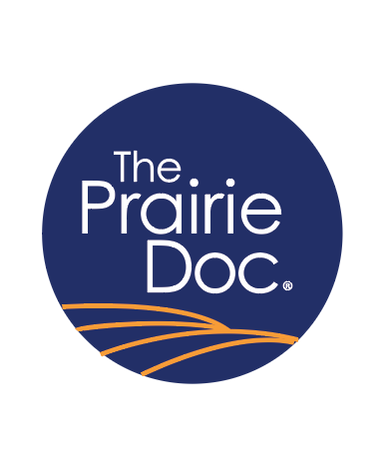Delivering Health Care to the PatientBy Vance Thompson, M.D.
In the old days, country doctors often cared for folks by coming to the patient’s homes. These house calls brought great relief to people and families that needed medical attention. Nowadays, we are becoming familiar with telemedicine, or health care services provided electronically via the Internet. In rural settings, telemedicine helps provide specialty care to patients without the travel required for in-person visits. Access to medical care via telemedicine can greatly reduce costs and wait times for those in need. And, during the pandemic we saw how telemedicine grew tremendously, regardless of location. Some aspects of telemedicine are almost like being together in person. For instance, according to Nobel Peace Prize recipient Dr. Bernard Lown, in about 75 percent of patient encounters, listening to the patient describe symptoms and concerns allows doctors to obtain sufficient information to make the diagnosis before performing a physical examination and tests. Experience has shown that listening and diagnosis can occur via telemedicine, but can empathy occur to the point of the patient feeling deeply cared for? Caring is defined as feeling or showing concern for or kindness to others. I feel caring for one another is one of the most important aspects of our life here on Mother Earth. There has been significant research about the telemedicine patient experience. In a 2020 landmark study called the Press Ganey Report on Telehealth more than 3.5 million surveys about telemedicine were sent out in the United States and the results were supportive of this new technology. Overall, patients considered the telehealth experience a positive. Patients also felt very cared for in their telehealth visit and they were more likely to refer their friends to a doctor who provided choice between an in-person visit or a telehealth visit. What was also interesting is that it did not matter the age of the patient. Millennials and Boomers alike gave similar positive ratings to doctors and health care facilities that provided them the option of telehealth. Like I tell my fellow physicians and health care providers, whether in private or academic practice, or in training, we are here to serve the public. I believe telehealth is here to stay because the public wants it. Offering both a quality telehealth network visit and the more traditional in-person visits gives patients the choice with regards to which is best for them. It also demonstrates that providers and health systems are listening to the patient. Vance Thompson, M.D., an ophthalmologist surgeon in Sioux Falls, South Dakota, is a contributing Prairie Doc® columnist. He will guest host On Call with the Prairie Doc® a medical Q&A show streaming on Facebook and broadcast on SDPB this Thursday at 7 p.m. central. For free and easy access to the entire Prairie Doc® library, visit www.prairiedoc.org and follow Prairie Doc® on Facebook. Strive to Prevent FallsBy Kelly Evans-Hullinger, M.D.
My grandmother was a lively, caring, wonderful woman, who remained very active late in her life. One spring day, after an unusual April blizzard, she stepped out of her apartment on her way to her weekly bridge game. She fell on the ice, in an event that led to an open ankle fracture and changed the course of the remainder of her life. We all know that a fall, especially in an elderly or frail person, can result in disaster. Major fall-related injuries such as hip fractures can sometimes precede abrupt decline in function and death in the worst cases. While many falls don’t result in any injury at all, when I discuss falls with my patients, I consider those events near misses and potentially catastrophic for any elderly or frail person. Falls can have many causes, and often numerous factors contribute. Some factors can be modified by at-risk people, and some cannot. Discussing the mechanism and contributors to falls with one’s health care provider (or even better, a physical or occupational therapist) can help identify those factors. If a person can reduce their risk of fall and injury, by all means we want to help! Modifiable risk factors might include weakness in large muscle groups, need for and proper use of an assistive device such as a walker or cane, and potential hazards in one’s home such as rugs or bathtubs. Of course, in some patients there may be fall risk factors which cannot be easily modified, which might result in the decision for extra help or a change in living arrangement. After my grandmother’s ankle fracture, she had a rocky course. She endured surgeries, bone infection, hospitalizations, and other medical complications. She never regained the ability to walk independently again and spent much of the last couple years of her life in a nursing home where she could receive the care she required. Last summer, my grandmother contracted COVID-19 at her nursing facility and sadly died a few weeks later. A woman who led a truly remarkable life lost her fierce independence after an accidental fall. I’m sure if she could have gone back in time, she would have just stayed home that icy April day. If you or a loved one is worried about falling, I hope you will talk to your primary care provider about it. Kelly Evans-Hullinger, M.D. is part of The Prairie Doc® team of physicians and currently practices internal medicine in Brookings, South Dakota. For free and easy access to the entire Prairie Doc® library, visit www.prairiedoc.org and follow Prairie Doc® on Facebook featuring On Call with the Prairie Doc® a medical Q&A show streaming on Facebook and broadcast on SDPB most Thursdays at 7 p.m. central. Addiction…Reality vs MythologyBy Debra Johnston, M.D.
Bacchus was a member of the Roman pantheon of gods. In ancient times he had a variety of attributes, but modern culture primarily remembers him as a god of wine and debauchery. Perhaps the image of his followers, or Bacchantes, as individuals who have abandoned society to live in a raucous state of perpetual inebriation has contributed to our perception of alcoholism and addiction. When I talk to my patients about their use of substances, be it alcohol, prescription medications, or street drugs, I find that most believe they don’t have a problem. They tell me they aren’t using every day, or they still make it to work in the morning, or they haven’t been arrested, or, my personal favorite, they only drink beer. There are many substances that people can misuse, and to which people can become addicted. If one peruses the current handbook that guides diagnosis in psychiatry, it is easy to see the similarities between alcohol use disorder, and opioid use disorder, and cannabis use disorder, and a myriad of other addictions. Sufferers may use more, or more often, than they intended. They may want to cut back but be unsuccessful when they try. They may spend unusual amounts of time seeking, using, or recovering from the use of their preferred substance. They may have strong cravings. They may give up other activities in favor of using. Their performance at work or school may suffer, or they may fail to meet family commitments. They may find themselves needing a greater quantity to achieve the same effect or having withdrawal symptoms. They may continue to use, despite knowing their use is detrimental to their relationships, or that it is dangerous and damaging their health. It is important to recognize that a person does not need to have all the above-mentioned experiences to have a substance use disorder. Indeed, the diagnosis can be made in the absence of most these criteria. Most who suffer from addiction are not souls lost on skid row. They are our neighbors, our friends, our family. Genetics is an important predictor of who will develop a substance use disorder, but it is not the only factor. Life experiences, particularly trauma experienced in childhood, personality traits, and the social environment all affect risk. Addiction is a common disease. Drugs and alcohol kill hundreds of Americans every day. The same is true for heart disease and cancer, and we don’t criticize the patient for these diseases. It’s time we show the same compassion for people diagnosed with addiction and consign the image of the Bacchantes to mythology. Debra Johnston, M.D. is part of The Prairie Doc® team of physicians and currently practices family medicine in Brookings, South Dakota. For free and easy access to the entire Prairie Doc® library, visit www.prairiedoc.org and follow Prairie Doc® on Facebook featuring On Call with the Prairie Doc® a medical Q&A show streaming on Facebook and broadcast on SDPB most Thursdays at 7 p.m. central. The Window to Your HealthBy Jill Kruse, D.O.
Eyes are often called the “window to the soul”, but they can also be the “window to your health”. Most people know that it is essential to visit your primary physician for an annual check-up, but an annual eye exam is an important part of staying healthy as well. The eye is the only area of the body where doctors can see small blood vessels with such clarity. So, during your annual physical exam, your physician will examine your eyes briefly with a handheld tool called an ophthalmoscope. This device gives your physician a great view of those blood vessels located on the back wall of your eye. However, for a much more thorough understanding of your eye health, you need a dedicated eye exam by an optometrist or ophthalmologist. These health care providers have an arsenal of tools and techniques at their disposal for examining the eye and screening for eye disease. For example, when your optometrist or ophthalmologist looks at the back wall of your eye, they lower the lights in the room and use drops to dilate your eyes. This enhanced exam is more effective in detecting changes in or damage to those blood vessels which can be caused by high blood pressure or diabetes. As a result, eye doctors frequently refer patients to their primary care physicians in the early stages of these diseases. When diabetes is diagnosed, medical doctors and eye specialists work hand in hand monitoring patients for complications from the disease. One such complication, diabetic retinopathy, damages the blood vessels of the retina and is the most common cause of blindness in American adults. This too can be detected during a dilated eye exam. An eye specialist can also screen for glaucoma, a condition where fluid builds up in the eye causing increased pressure that can damage the optic nerve. If left untreated, it can lead to blindness. Macular degeneration is another disease that your optometrist or ophthalmologist is trained to detect. This is an eye disorder associated with aging and results in damage to the central vision which at its worst can result in the permanent impairment of vision needed for reading and close-up sight. It takes a team of providers to monitor and maintain your health. When scheduling your annual exams, do not ignore your eyes, as they can be the “window” we need to see what is going on in the rest of your body. Jill Kruse, D.O. is part of The Prairie Doc® team of physicians and currently practices family medicine in Brookings, South Dakota. For free and easy access to the entire Prairie Doc® library, visit www.prairiedoc.org and follow Prairie Doc® on Facebook featuring On Call with the Prairie Doc® a medical Q&A show streaming on Facebook and broadcast on SDPB most Thursdays at 7 p.m. central. |
Archives
July 2024
Categories |
 RSS Feed
RSS Feed


